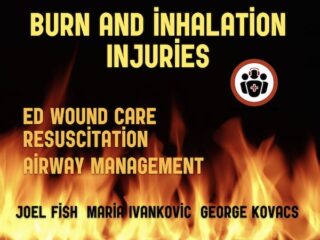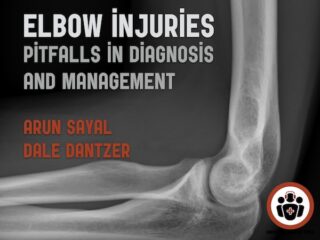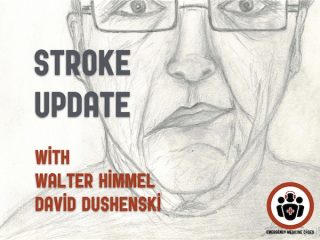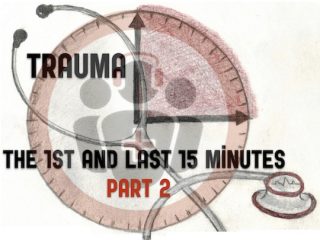
Ep 124 Burn and Inhalation Injuries: ED Wound Care, Resuscitation and Airway Management
It turns out that for all burn patients—from minor to severe—there is a lot of room for improvement in ED management, counselling and disposition. Things like inaccurate estimation of burn size, unnecessary endotracheal intubation, over- and under-estimation of fluid resuscitation volumes, inadequate analgesia and inappropriate wound dressings are just some of the issues where a small change to ED practice patterns could have a huge impact on patient care. In this EM Cases main episode podcast we have the director of the Burn Unit at Hospital for Sick Children, Dr. Joel Fish and EM educator Dr. Maria Ivankovic discuss dozens of pearls and pitfalls in the management of both pediatric and adult burn and inhalation injuries management with a special appearance by airway master George Kovacs to talk about awake intubation in the burn and inhalation injuries patient...
Ep 123 Pediatric UTI Myths and Misperceptions
On the one hand, UTI is one of the most common bacterial infections in children younger than 2 years of age and could lead to sepsis acutely and theoretically renal failure in the long run. On the other hand, it is important not to over-diagnose UTIs because we know that overuse of antibiotics increases costs, side effects and leads to antibiotic resistance. The first principles questions very much apply here: who to screen, how to screen, and what to do with the screen results. There are risks associated with not having a standardized approach to diagnosing pediatric UTIs. In this EM Cases main episode podcast with Dr. Olivia Ostrow and Dr. Michelle Science we discuss an approach to diagnosing pediatric UTIs whilst revealing some common pediatric UTI myths and misperceptions...
Ep 122 Sepsis and Septic Shock – What Matters from EM Cases Course
In this podcast Dr. Sara Gray, intensivist and emergency physician, co-author of The CAEP Sepsis Guidelines, answers questions such as: How does one best recognize occult septic shock? How does SIRS, qSOFA and NEWS compare in predicting poor outcomes in septic patients? Which fluid and how much fluid is best for resuscitation of the septic shock patients? What are the indications for norepinephrine, and when in the resuscitation should it be given, in light of the CENSER trial? What are the goals of resuscitation in the patient with sepsis or septic shock? When should antibiotics administered, given that the latest Surviving Sepsis Campaign Guidelines recommend that antibiotics be administered within one hour of arrival for all patients suspected of sepsis or septic shock? What are the indications for a second vasopressor after norepinephrine? Given the conflicting evidence for steroids in sepsis, what are the indications for steroids? Should we be considering steroids with Vitamin C and thiamine for patients in septic shock? What are the pitfalls of lactate interpretation, and how do serial lactates compare to capillary refill in predicting poor outcomes in light of the ANDROMEDA trial? Is procalcitonin a valuable prognostic indicator in septic patients? and many more...
Ep 121 Elbow Injuries – Ten Pitfalls in Diagnosis and Management
In this main episode podcast we discuss the pitfalls in the diagnosis and management of elbow injuries and answer questions such as: What is an easy way to remember the surgical indications for radial head fractures? What is the significance of a coronoid process fracture and how does it change management when seen with a radial head fracture? What is the best way to assess for pronation and supination of the forearm? Why is it so important to assess for the extensor mechanism on physical exam for patients with olecranon fractures? What is a quick easy way to test the peripheral nerves of the upper extremities? Which often missed soft tissue injuries of the elbow require urgent operative management? and many more...
Ep 120 ED Stroke Management in the Age of Endovascular Therapy
In this EM Cases main episode podcast, a follow up to our episode on TIA released in November 2018 with Walter Himmel and David Dushenski, we’ll try to simplify the confusing time-based and brain tissue-based options for stroke management. We’ll answer the questions that have been plaguing us for a while now: Which patients are eligible for endovascular therapies? Which patients are the ones who’ll benefit from these therapies and how do we make that happen in our different practice environments? Which patients should be considered for lytic therapy? Which patients should be considered for both lytic and endovascular therapy? and many more...
Ep 119 Trauma – The First and Last 15 Minutes Part 2
What should your resuscitation targets be in the first 15 minutes for trauma patients with hemorrhagic shock, neurogenic shock, severe head injury? When is a pelvic binder indicated? Is a bedsheet good enough? What are the most common pitfalls in binding the pelvis? What are the best ways to maintain team situational awareness during a trauma resuscitation? Should we rethink patient positioning for the trauma patient? What are the indications for transport to a trauma center? What is the minimal data set required before transfer? Which patients require a pelvic x-ray prior to transfer to a trauma center? What are the key elements of a transport checklist? What does the future hold for trauma care and many more...






